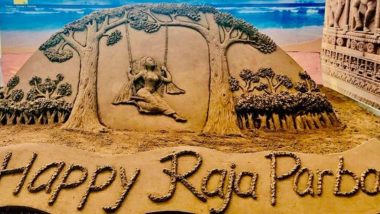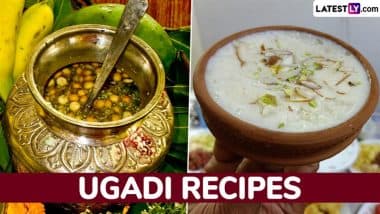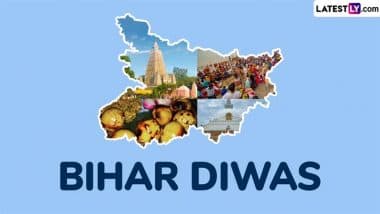Raja Parba is a three-day-long festival celebrated in Odisha also known as Mithuna Sankranti. Raja Parba is the second day of the festival which signifies the beginning of the solar month of Mithuna after which monsoon season begins. Raja Sankranti is the first day of the Ashara month and is celebrated on the day prior to the Sankranti also known as Pahili Raja. It is followed by Sankranti and then the day after is celebrated as Bhu Daha or Basi Raja. It is believed that during these three days, mother Goddess Earth or the divine wife of Lord Vishnu is menstruating. Mithuna Sankranti 2020 falls on June 15 and continues till June 18. Raja Parba 2020 in Odisha: Sudarsan Pattnaik Dedicates Sand Art to Mithun Sankranti Festival Celebrating Mother Earth and Menstruation.
Prime Minister Narendra Modi on Sunday greeted the people of Odisha on "Raja Parba", hoping that it strengthens the spirit of brotherhood in society. PM Modi tweeted saying, "Greetings on the very special festival of Raja Parba. May this occasion strengthen the spirit of joy and brotherhood in society. I also pray for the good health and well-being of my fellow citizens."
Raja Parba Significance And Celebrations
The fourth day is called Vasumati Snana when the ceremonial bath of Bhudevi is held. The term Raja came from the Sanskrit word 'Rajas' which means menstruation, hence when a woman menstruates, she is called 'Rajaswala'. The festival became popular as an agricultural holiday during the medieval times during which she worshipped Bhudevi, who is the wife of Lord Jagannath. A silver idol of Bhudevi is worshipped in the Puri Temple beside Lord Jagannath.
The final fourth day is called Vasumati snana, in which the women bath the grinding stone as a symbol of Bhumi. They apply turmeric paste and offer with flower and sindoor on it. The day before the first day is called Sajabaja during which women prepare for the festival. During the three days of the festival, women and girls take rest from work, wear new saree and adorn themselves with ornaments. It symbolises how the Earth prepares itself to quench its thirst from the rain. They celebrate the day by observing various customs and traditions like eating only uncooked and healthy food like Podapitha. They do not take a bath or eat salt, do not walk barefoot and vow to give birth to healthy children in future.
Rope-swings are made on from the roots of big banyan trees and listen to lyrical folk-songs. According to a popular belief as the women menstruate, a sign of fertility it is believed Mother Earth also menstruates. Hence no agricultural activities are held during this time and the day is dedicated to unmarried girls and potential mothers. Women sing folk songs and different competitions are held. We wish everyone celebrating a festive time!
(The above story first appeared on LatestLY on Jun 14, 2020 07:01 PM IST. For more news and updates on politics, world, sports, entertainment and lifestyle, log on to our website latestly.com).













 Quickly
Quickly





















